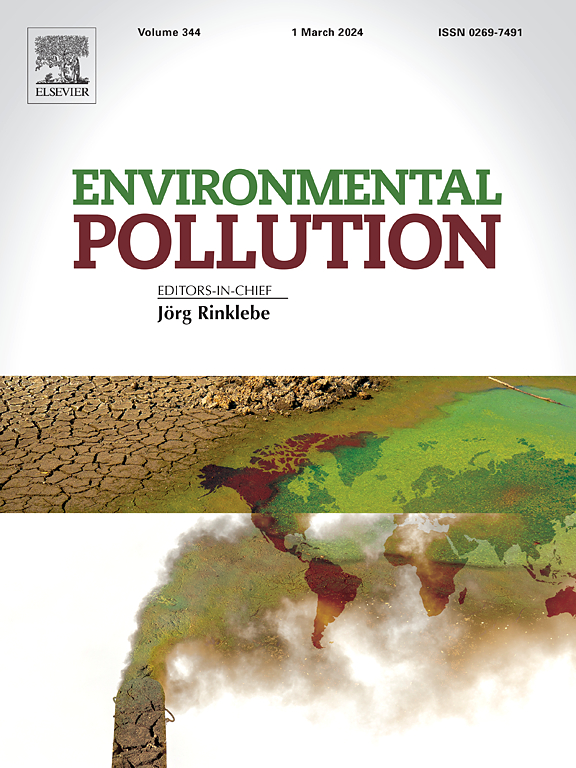Mechanistic insights into fluoranthene degradation: Activation of peroxymonosulfate by mackinawite and pyrite in aqueous solution and soil slurry
IF 7.6
2区 环境科学与生态学
Q1 ENVIRONMENTAL SCIENCES
引用次数: 0
Abstract
The slow regeneration of Fe(II) in conventional Fenton and Fenton-like systems poses significant limitations for sustained and continuous generation of reactive oxygen species (ROS), which is critical for effective pollutant degradation. This study investigates the use of iron sulfide minerals—specifically, mackinawite (FeS) and pyrite (FeS2)—as both activators and reductants in peroxymonosulfate (PMS)-based Fenton-like systems to enhance Fe(II) regeneration and improve pollutant degradation efficiency. Results demonstrate that over 90 % of fluoranthene (FLT) was degraded within 60 min using the PMS/FeS and PMS/FeS2 systems. Reactive species including SO4−•, HO•, and 1O2 were generated in both systems, with SO4−• playing a primary role in FLT degradation, while 1O2 contributed partially to the process. Both FeS and FeS2 maintained structural stability during PMS activation, with surface Fe(II) oxidized to Fe(III) and reductive sulfur species (S2− in FeS and S22− in FeS2) facilitating the Fe(III)/Fe(II) cycle before ultimately converting to SO42−. These systems demonstrated robust performance across diverse water matrices, achieving excellent FLT degradation in actual groundwater and soil slurry, underscoring the promising application potential of PMS/FeS and PMS/FeS2 systems for remediating FLT-contaminated environments.


求助全文
约1分钟内获得全文
求助全文
来源期刊

Environmental Pollution
环境科学-环境科学
CiteScore
16.00
自引率
6.70%
发文量
2082
审稿时长
2.9 months
期刊介绍:
Environmental Pollution is an international peer-reviewed journal that publishes high-quality research papers and review articles covering all aspects of environmental pollution and its impacts on ecosystems and human health.
Subject areas include, but are not limited to:
• Sources and occurrences of pollutants that are clearly defined and measured in environmental compartments, food and food-related items, and human bodies;
• Interlinks between contaminant exposure and biological, ecological, and human health effects, including those of climate change;
• Contaminants of emerging concerns (including but not limited to antibiotic resistant microorganisms or genes, microplastics/nanoplastics, electronic wastes, light, and noise) and/or their biological, ecological, or human health effects;
• Laboratory and field studies on the remediation/mitigation of environmental pollution via new techniques and with clear links to biological, ecological, or human health effects;
• Modeling of pollution processes, patterns, or trends that is of clear environmental and/or human health interest;
• New techniques that measure and examine environmental occurrences, transport, behavior, and effects of pollutants within the environment or the laboratory, provided that they can be clearly used to address problems within regional or global environmental compartments.
 求助内容:
求助内容: 应助结果提醒方式:
应助结果提醒方式:


